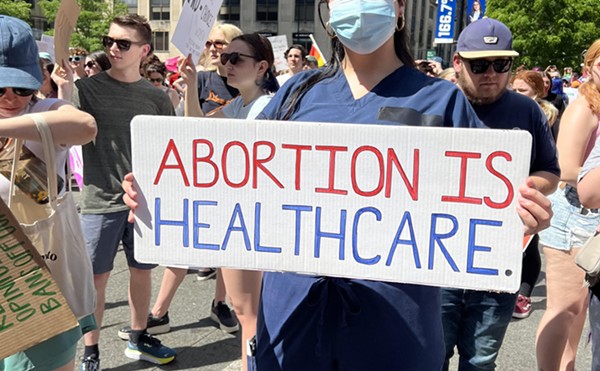While the Bengals and Reds stadiums have attracted the bulk of riverfront development attention, the National Underground Railroad Freedom Center has quietly crossed the halfway point on its fundraising campaign.
John Pepper, fundraising campaign co-chair and new chairman of Procter & Gamble Co., recently announced that the Freedom Center had raised $48 million of the $90 million needed for the project, which is expected to be split between public and private contributions.
The center will be dedicated to educating patrons about slavery and the heroes of the Underground Railroad — a network of people who helped slaves escape from Southern states to the North — and will be the centerpiece of the planned Banks project, a riverfront neighborhood integrated with offices and residences to be built between the new stadiums.
Located on four acres of land south of the new Second Street between Walnut and Vine, the center will occupy half that space with the remaining land used for a park. Officials hope to break ground on the center in early 2002 and open it in 2003 and expect to attract 600,000 visitors annually. Ticket prices haven't been set.
Though designs for the center won't be finalized until later this summer, more than 200 donors received a sneak peak at the developing plans after a June 14 dinner and press conference, according to Ernest O. Britton, the Freedom Center's associate director for communications. Freedom Center visitors will be able to explore eight exhibits, including:
· A slave pen found on a farm in Mason County, Ky., that held slaves before they were taken to Lexington to be sold;
· A story theater incorporating virtual reality simulation where visitors will be immersed in the personal experience of someone from the Underground Railroad;
· And an area where visitors can discuss the experience of their visit and what the quest for freedom means today.
Private sponsors have pledged a total of $30 million so far, Pepper said. That figure includes $3 million from Pepper and his wife, Francie; $1.5 million from Fifth Third Bank; and gifts of $1 million by Cinergy Corp., Boeing Co., Harold C. Schott Foundation, Otto Budig Family Foundation and an anonymous donor from outside Ohio.
"This is a fairly unique campaign in that it's a national campaign," said Freedom Center President and CEO Ed Rigaud.
Center officials are planning partnerships throughout the country to install "freedom stations," which might be a simple kiosk at another national museum or a freestanding room filled with computers at sites or educational facilities in one of the 29 states with documented Underground Railroad activity, Britton said. He expects agreements for the first six stations to be finalized by the end of the year.
The Freedom Center also will help with student programs about slavery and freedom, such as a pilot program at Hughes Center High School building a Web site focusing on Cincinnati's role in the Underground Railroad (www.criticalfusion.org).
Projects like these have helped the Freedom Center attract contributors.
"We felt the efforts were very worthwhile," said Amanda Landers, a spokesperson for Boeing, headquartered in Seattle.
Though Boeing has no facilities in Cincinnati, Landers said the company contributed to the Freedom Center because it's a national effort with satellite programs in other cities. "It provides a wonderful educational resource for our employees and their families," she said.
Fifth Third's $1.5 million donation was its largest ever, according to Lawra Baumann, vice president of the bank's foundation office.
"We see the Freedom Center as really an unparalleled opportunity to showcase the area not only at the regional but also at the national level," Baumann said.
She also said the bank sees the Freedom Center as a good way to make public more aware of the historical implications of slavery and the contributions of African Americans to the United States.
Of the approximately $18 million in government contributions, the city of Cincinnati and Hamilton County each contributed $6 million, the state of Ohio gave about $4.5 million and the federal government gave about $1.5 million.
The next phase of fundraising will focus on soliciting a total of $5 million in individual gifts from Tristate residents. Then, in early 2001, a wider public campaign for donations of all sizes will begin to "give people the opportunity to have ownership of this institution," Rigaud said.
Freedom Center officials hope that people will leave the museum knowing that slavery was a horrible experience and that it still has an impact on race relations today, according to Britton. They hope visitors will be inspired to "take some action in their own community to eliminate oppression," he said, and commit to work together to eliminate the negative legacy of slavery.
"This will be an icon in Cincinnati," Pepper said. "People will travel from around the country and, I think, around the world to see this center. And I think for good reason."





